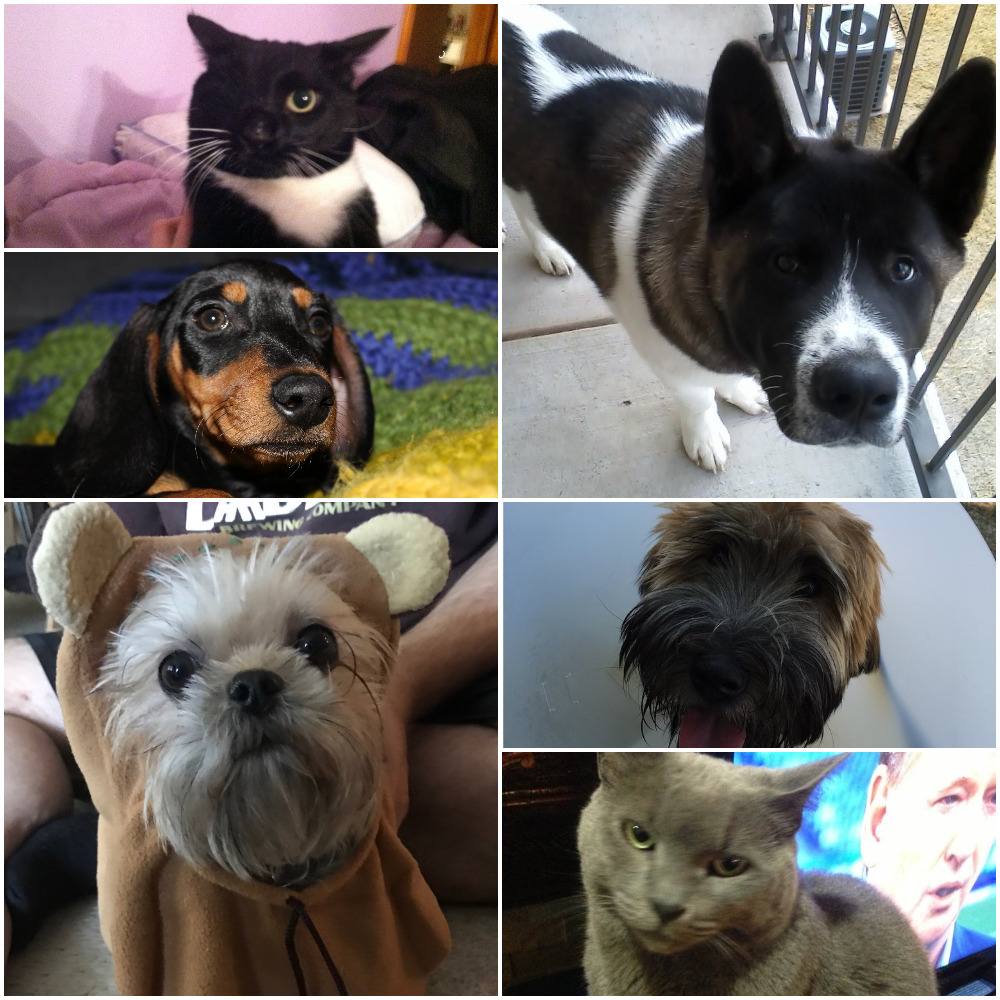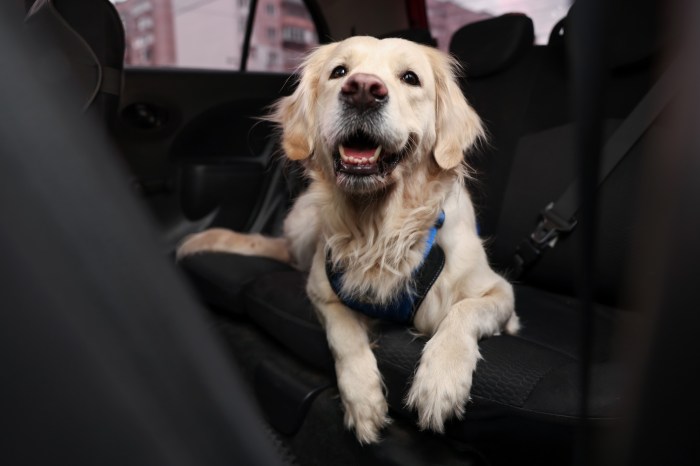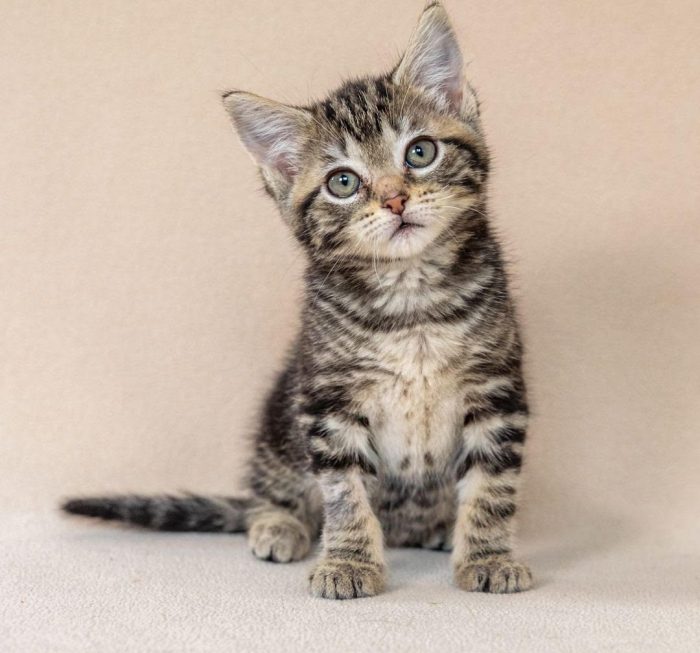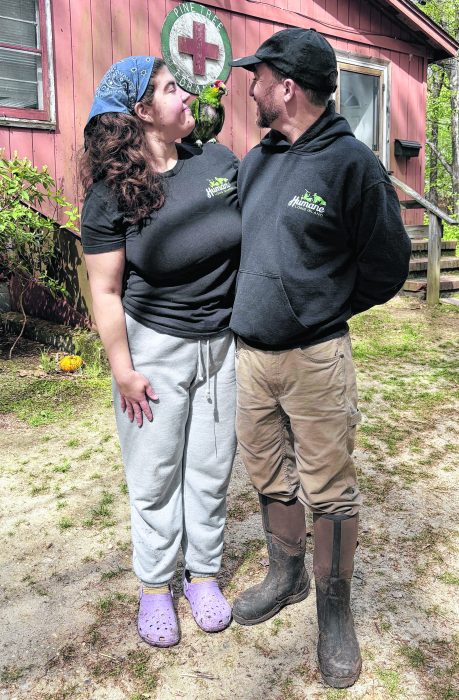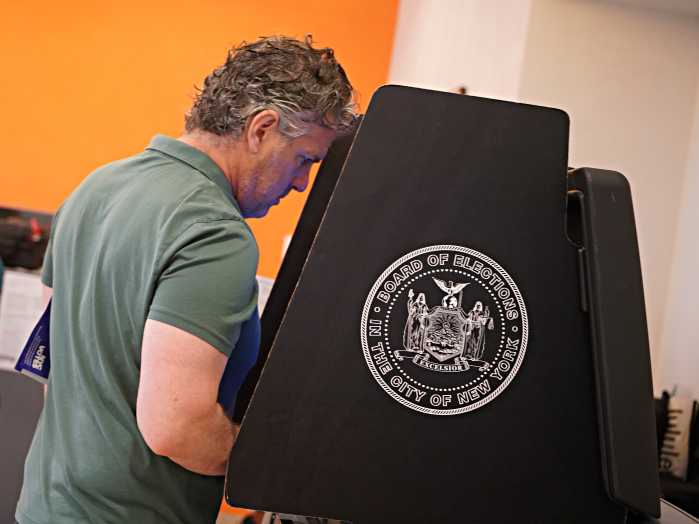Heavy snowfall is on the way, and that means it’s time to review some fundamental Winter Snow Storm & Blizzard Pet Safety Tips to help keep your beloved critters safe and warm throughout the winter storm.
Bone-chilling temperatures, strong winds and blizzard-like conditions aren’t just hazardous for humans. Winter storms create a dangerous environment for dogs. Cats, birds, reptiles and other pets, too. Knowing the best preparation techniques and precautions to undertake when a powerful snowstorm affects your area will not only help you ensure the well-being of your human family members, but your four-legged, scaled, whiskered and winged family members, too.
That’s why it’s always important to include your pets in your winter storm preparation plans. The following are guidelines and procedures to help you prepare your home and animals for the cold temperatures, mounting snow, and blistery winds associated with winter storms.
1. Don’t leave your pets outside!
Cannot stress this first tip enough. If weather conditions are too dangerous outside for you and your human family members, why would you possibly think they are not dangerous for your beloved pets as well? They are!
2. Bring your beloved animals inside.
Get them out of the cold. Shelter them from the snow and freezing rain. Protect them from the ice and any related dangers that heavy snow accumulation and frigid temperatures create—including fallen trees and powerlines, treacherous roads and streets and the possibility of them becoming snowbound, trapped, and incapacitated.
This also applies to outdoor cats. Felines are a resilient and mysterious bunch, indeed, but when it comes to the fury of Mother Nature, even the most veteran outdoor cat is no match for the extreme cold and substantial snow and ice.
3. Always remember: A snowstorm is absolutely no place for a pet.
Animals can easily become inundated and overwhelmed by even minimal amounts of snow and ice and frigid temperatures, just as humans can. It is not safe for people to be outside during a winter storm, and likewise it is not safe for animals and pets. Thinking logically about this can not only perhaps help save the life of a family member, but also the precious life of your cutesy, furry creatures. Be smart. Keep your family indoors!
4. Do not—repeat—do not let your dog off the leash after heavy snowfall.
Winter storms can render canines’ famously acute sense of smell useless. When dogs lose their sense of smell, they can easily become disoriented and lost, which leads to our next Winter Storm Pet Safety Tip.
5. Make sure each and every pet wear tags and collars—and make sure all their tags and collars contain up-to-date identification information.
This is a very important tip, especially if for some reason you did allow your pets outside or they somehow escaped to try and roam around outside during a winter storm. In the hopes that these loveable critters would somehow be discovered by neighbors or passersby or perhaps, sometime after the storm, wandering nearby streets and communities, you would want whoever found your adorable creatures to be able to return them home into your caring arms. They cannot do that unless your pets are wearing tags and collars that contain up-to-date contact information. Please, ensure they have these potentially life-saving gear, and please, make sure that information is updated!
6. If, by chance, you do not heed the above calls to keep your pets indoors during a winter storm, then please, at the minimum, keep a close eye on them as they roam outdoors.
Pets of all types can easily become confused in heavy snow and ice, and as mentioned, can find themselves disoriented, overwhelmed, and alone.
Canines can lose their scent in all the dangerous weather conditions, and felines, as well. When this happens, familiar smells and landmarks cats and dogs use for critical navigation simply disappear.
7. Stock up on all pet food and medicines ahead of time.
Mother Nature is unpredictable, and even light or moderate amounts of snow and ice can make travel extremely difficult, or even impossible. That’s why this tip is so crucial. If you stock up on all your pets’ foods and supplies and necessary medications in advance of inclement weather, this eradicates the possibility of your dear critters facing a food shortage and direly requiring medical attention for lack of important medications. Again, treat your pets as you would any other member of your family. Stock up on food and medicine and other necessary supplies so you can weather out that winter storm, together, safely and prepared!
8. Prepare for the possibility of a power outage.
Now this is also a very important tip, especially if your pets are of the amphibious or scaly kinds. Fish need electricity to operate their tank filters and clean out toxins from their water. Snakes and skinks and anoles and salamanders and other reptiles require their heat lamps and warmth stones to stay, well, warm and hot! Some pocket pets—for example, sugar gliders—also need to stay warm.
Perhaps then, it is time to invest in a backup generator for your home. This is a wide decision, in any case, since such a machine will also serve to keep your human family members warm, and ensure the proper functioning of many lifestyle appliances, such as portable heater, lights, and yes, even refrigerator, operating throughout the storm, as well as during its aftermath.
Backup generators, then, can also ensure your pets—especially those requiring warmer environs than others—continue to receive those all-important, and in some cases life-saving, services to keep them safe. True, backup generators can be expensive, but their value during a severe winter storm can be absolutely priceless, since they can, in fact, save lives.
9. Prepare pet emergency kits.
Just as you are advised to create emergency kits, also known as storm preparedness kits, for human family members, so too should you prepare these for your pets. What is in such a specialized kit, you may ask? Medical records, pet food, extra water, medications and even pet First-Aid supplies. Anything that you and your pets may need to survive in anticipation of the absolute worst should be included in these all-important kits.
10. Clean your pooch’s paws!
This is a very important, yet often overlooked tip. Always be sure and clean off your canines’ paws with a moist washcloth when returning indoors from outside. This is because those chemicals and snow-melting salts so commonplace to rid stoops, sidewalks, and even streets can be extremely painful to your pooch! If your furry friends lick or eat some of that stuff, too, they can become sick!
A canine coat and booties can help protect their paws and keep them warm and snugly against the driving winds and snow! (Plus, they’re uber-cute!)
11. Develop and emergency plan.
An emergency plan should be a top priority for every family in the face of major winter storms, or any forecasted storm, for that matter, but it is vitally important that these precautions also account for your pets. Such contingencies include the aforementioned emergency plans replete with necessary foodstuffs, water, medicines and other supplies, but also strategize for a universally agreed upon meeting place for all family members to rendezvous at should the home become inhabitable and a mass evacuation imperative. So too must pet owners include safeguards in these critical strategies for their pets! Take some time before the impending storm hits to search for pet-friendly shelters that will not just protect you, but your precious pups and cats and birds, reptiles and marsupials (did she just write that? Why yes she did!), too!
Always remember: Do not leave those pets behind!
Much of the above Winter Snow Storm & Blizzard Pet Safety Tips were provided to media outlets by Nassau County SPCA. To learn more pet-friendly tips and advice, and to discover loveable, cute adoptable pets who are waiting for new forever homes and families, visit nassaucountyspca.org




